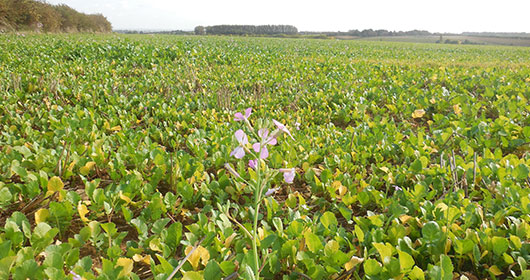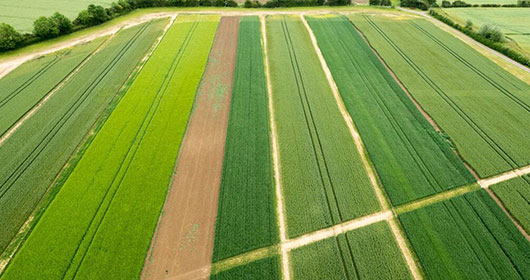Rotations
Longer, more diverse rotations can help minimise the impact of weeds, pests and diseases, whilst maximising output and margins.
- Consider using rotations to manage grass-weed challenges, work loads and machinery capacity
- Improve nitrogen efficiency through the strategic use of green manures
- Specific cover crop selection can help reduce nematode issues, particularly in root crop rotations.
Crop rotations have been part of agricultural practice in Europe since the middle ages and are important in supporting yield performance by protecting the land against soil erosion, pathogen build up and pressure from disease and weeds.
Decisions on rotations will depend on the specific circumstances of the farm, but should take into account local geographic factors, including soils, and the target end markets. We recommend measuring the profitability of the farm across the whole rotation, rather than by single year, since some crops which may appear less profitable may provide longer term benefits for subsequent crops.
Careful planning of rotations is key to the success of a sustainable farming business. First, consider the capability of the soil and any inherent weed problems, as well as any other pests or pathogens that may be present. It is also important to establish suitability for spring drilling. Then we can develop a long term approach to the rotation, identifying specific varieties that can help meet the challenges faced, leading to a rotation that is agronomically, environmentally and economically sound.
Soil structure and fertility will be improved by including pulses or oilseed rape in the rotation, although we would not advise growing oilseed rape more than one year in four. Break crops can help manage weed populations as part of an integrated approach to resistance management.


3D Thinking in Action
Extensive long term studies on the effect of rotations on black-grass control are taking place at our 3D thinking site at Staunton in the Vale. This seven year research programme is already delivering some interesting conclusions. We are also considering the effect of rotations on farm profitability, comparing results across a whole rotation rather than annually. This rotational work also includes looking at the impact of fallow land and whole crop harvesting within the rotation.
Selecting the right cover crop is vital and its required function plays a key part in this selection, as does its position in the rotation. Some brassicas can exacerbate the effects of club root in a tight oilseed rape rotation, for example. In such a situation, oil radish is the preferred brassica. However mustard might well be a good choice in a sugar beet rotation with no oilseed rape. In some rotations, nematodes and soil fungi can be a problem. Specific cover crops for biofumigation and nematode trapping can help. Advice from a specialist when planning cover crops into your rotation is essential.









